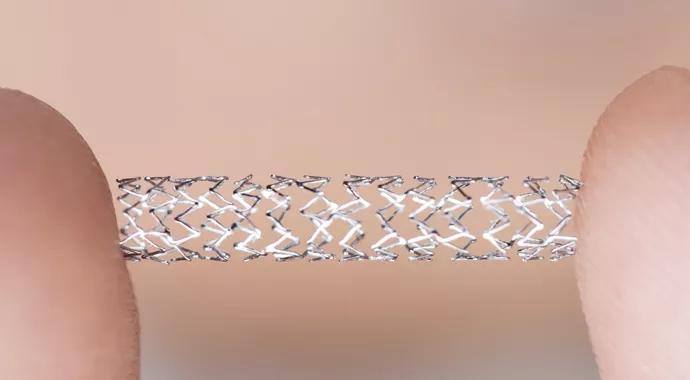Study shows patients over 80 can still have good outcomes

Cardiologists have long wondered whether they should treat older patients as aggressively as they do younger ones. A new study shows that for at least one segment of the 80-and-over demographic, they should consider it.
Cleveland Clinic is a non-profit academic medical center. Advertising on our site helps support our mission. We do not endorse non-Cleveland Clinic products or services. Policy
In the so-called After Eighty Study, researchers from Rikshospitalet Oslo University Hospital, Norway, reported that patients with non–ST-segment elevation myocardial infarction (NSTEMI) or unstable angina who are healthy enough to undergo a revascularization procedure do better having the procedure than just being treated with medication. The findings were presented at the American College of Cardiology Scientific Session this past March.
“Age is a moving target,” says Cleveland Clinic cardiologist Samir Kapadia, MD, commenting on the study. “Some 80-year-olds are healthier than others, and we should not make treatment decisions based on age alone. Many people are still enjoying life over 80 and deserve the best possible health outcomes we can give them.”
The researchers randomized 457 stable patients aged 80 or older who had NSTEMI or unstable angina to receive one of two treatment approaches: (1) a conservative strategy involving optical medical treatment alone or (2) an invasive strategy involving optimal medical treatment plus a coronary angiography evaluation in the cath lab. If deemed necessary by their physicians, patients undergoing the invasive approach were referred for percutaneous coronary intervention (PCI; angioplasty or stenting) or coronary artery bypass graft surgery.
Of the 225 patients in the invasive-strategy group, 48 percent were treated with PCI and 3 percent were treated with bypass surgery.
The researchers found a significant 47 percent reduction in the primary end point — a composite of MI, urgent revascularization, stroke or death over median follow-up of 18 months — in the invasive-strategy group relative to the conservative-strategy group (P < .0001).
Significant differences applied to several individual components of the primary end point as well, such as MI, which occurred in 17 percent vs. 30 percent of patients in the respective groups.
“These results show that a much larger than expected proportion of patients over 80 benefit from revascularization in addition to medical therapy alone,” says Dr. Kapadia. “This proves the concept that even older adults can achieve good cardiac outcomes.
“If you look at all the literature today about cardiac problems,” he continues, “it is very clear that revascularization helps patients with unstable angina or NSTEMI. It reduces the future risk of MI, no question about it. The question being asked in this study was whether our oldest patients see the same results, and clearly they do.”
Dr. Kapadia notes that while these results are interesting, they will not likely have a major impact on cardiac care in the U.S. because physicians here are already likely to do more, rather than less, for their older patients.
“This study would have changed our practice patterns a lot if the findings went the other way,” he says. “However, our current practice is similar to what these researchers found to be best — that if patients are able to withstand having a revascularization, we should do it.”
He adds that the decision about who is healthy enough to undergo a procedure of course often comes down to physician judgment. “This is not something we can decide through a computerized protocol. We have to talk to the patient and the family to discuss their expectations and their personal risk factors in an evidence-based manner before we make any decisions.”

Pilot study confirms feasibility of conducting additional research on the novel treatment

Longer hospitalization does not mean a safer, faster recovery for patients age 70+

Structured data helps identify older adults at risk for poor outcomes, defines patients who require more comprehensive assessments

Self-administered tool can be completed in 10 minutes in waiting room

Social prescribing turns leisure activities into good “medicine”

A large geriatric study aims to find the answers

Analysis underscores how telehealth can help pinpoint elder abuse